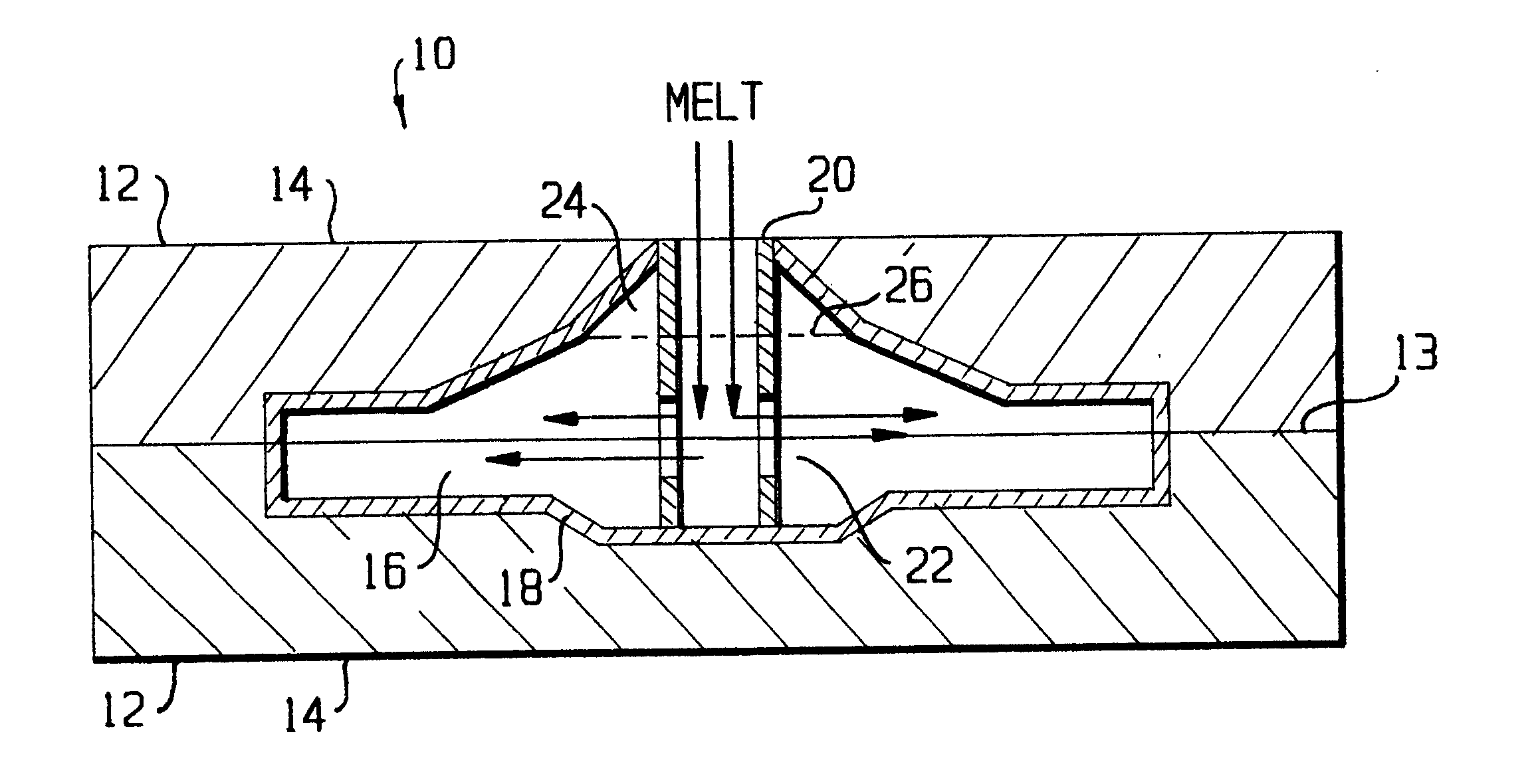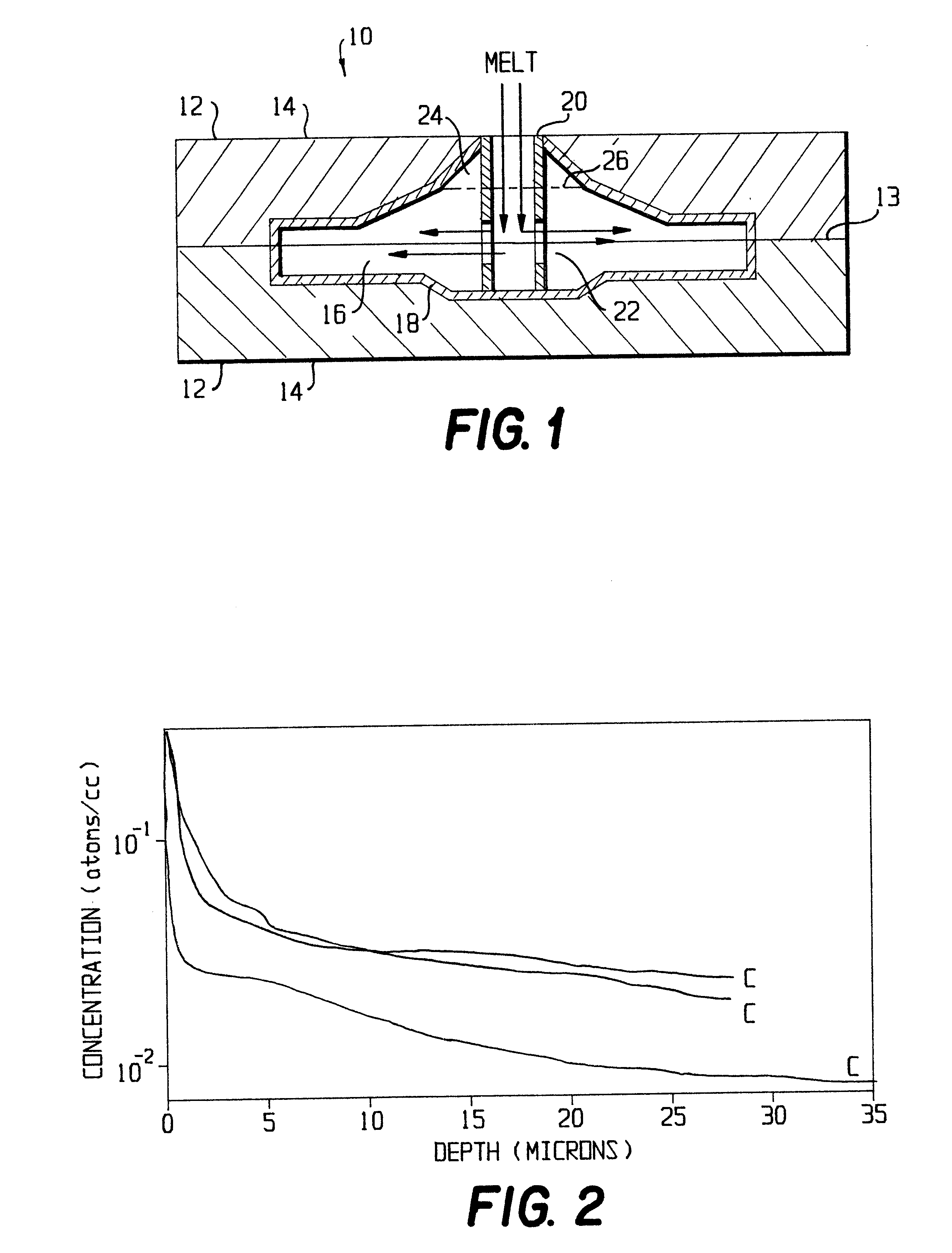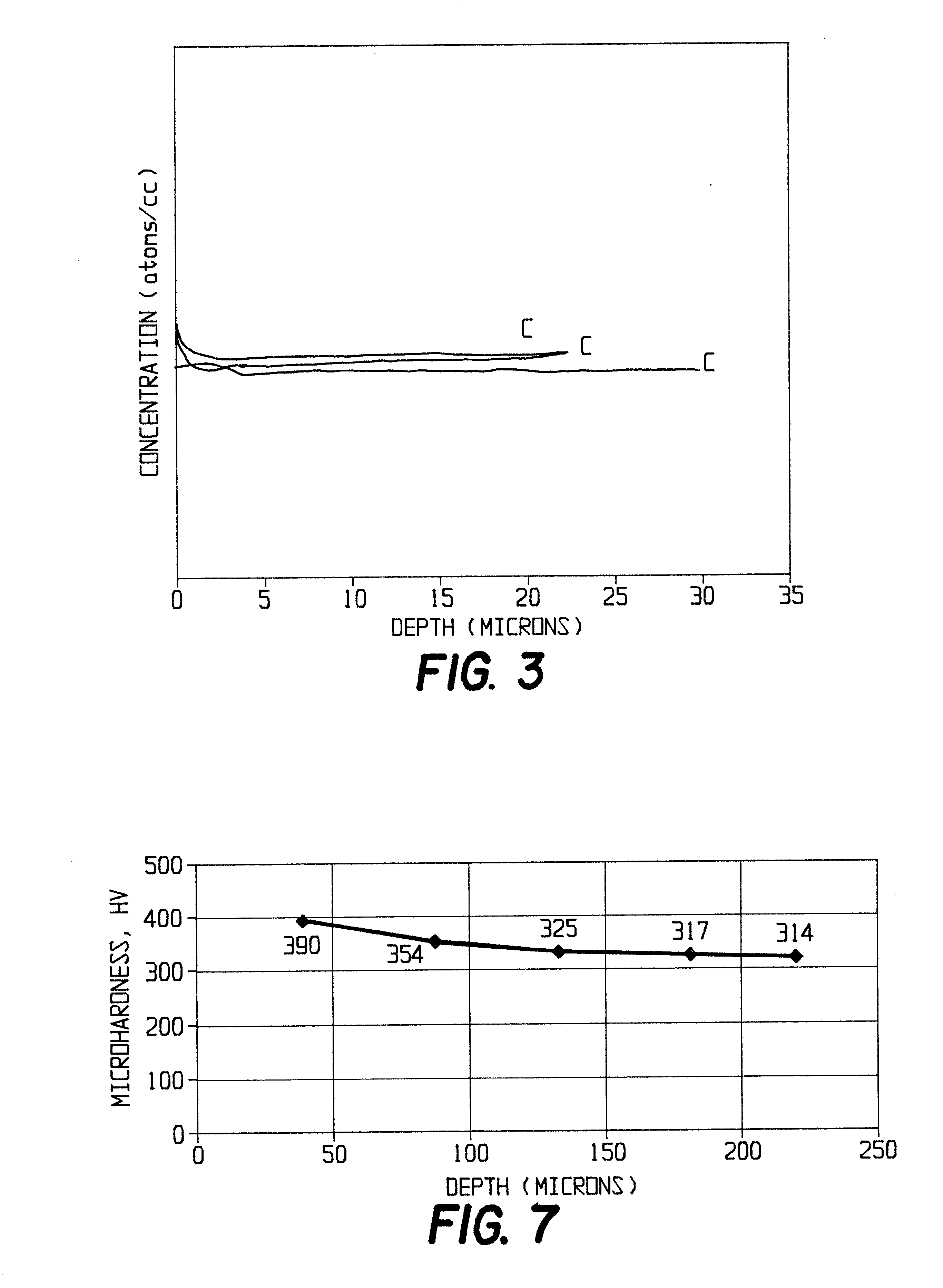Castings of metallic alloys with improved surface quality, structural integrity and mechanical properties fabricated in anisotropic pyrolytic graphite molds under vacuum
a technology of anisotropic pyrolysis and graphite, which is applied in the direction of manufacturing tools, foundry molds, foundry patterns, etc., can solve the problems of slow process, one of the most expensive casting processes, and the need for expensive alterations to metal dies, so as to achieve the effect of more economical
- Summary
- Abstract
- Description
- Claims
- Application Information
AI Technical Summary
Benefits of technology
Problems solved by technology
Method used
Image
Examples
example 1
TABLE 5 lists various nickel, cobalt and iron base superalloys that are suitable candidates to be fabricated as castings with high integrity and quality under vacuum in isostatic graphite molds coated with pyrolytic graphite.
The molds for performing experiments according to the present invention are made with isostatically pressed isotropic graphite having a machined mold cavity coated with pyrolytic graphite. Some identical experiments are performed with molds made with extruded anisotropic graphite. The objective is to demonstrate the difference in the quality of castings made with different grades of graphite. The isotropic graphite and extruded graphite required for conducting the experiments can be procured, for example, from SGL Carbon Group. The pyrolytic graphite coatings can be prepared using the CVD technique by SGL Carbon.
Typical shapes of castings which can be fabricated are as follows:
(1) 1 inch diameter.times.25 inches long
(2) 1 / 2 inch diameter.times.25 inches long
(3) ...
example 2
Titanium and Titanium Aluminide Castings
The major use of titanium castings is in the aerospace, chemical and energy industries. The aerospace applications generally require high performance cast parts, while the chemical and energy industries primarily use large castings where corrosion resistance is a major consideration in design and material choice.
Titanium alloys and titanium aluminide alloys are induction melted in a water cooled copper crucible or yttrium oxide crucible and cast in high density isotropic graphite molds coated with pyrolytic graphite molds.
The castings can be produced with high quality surface and dimensional tolerances free from casting defects and contamination. Use of the casting process according to the present invention eliminates the necessity of chemical milling to clean the contaminated surface layer on the casting as commonly present in titanium castings produced by the conventional investment casting method. Since the pyrolytic graphite molds did not ...
example 3
Mold Metal Interaction in Titanium Casting Made in Isotropic Graphite Mold
A titanium alloy having the composition of Ti-6Al-4V (wt %) was induction melted in a water cooled copper crucible and cast as a step plate into isotropic graphite mold. The plate was 7 inch wide.times.20 inch long having various thickness ranging from 2 inch to 0.125 inch.
Samples having the size 5 mm.times.5 mm.times.5 mm were cut out from the edge of the Ti-4Al-4V casting wherein one surface of the said sample is the surface in contact with the graphite mold. Carbon concentration in the cast plate was analyzed from the outer surface to 30 microns depth inside using Secondary Ion Mass Spectrometry (SIMS) technique according to ASTM 1523 and ASTM 1617.
SIMS analysis is accomplished by bombarding the sample surface with an energetic ion beam and analyzing the ions (secondary) that are sputtered from the surface. SIMS analysis can be accomplished using a high ion beam surface density (dynamic SIMS) where the mate...
PUM
| Property | Measurement | Unit |
|---|---|---|
| thickness | aaaaa | aaaaa |
| flexural strength | aaaaa | aaaaa |
| flexural strength | aaaaa | aaaaa |
Abstract
Description
Claims
Application Information
 Login to View More
Login to View More - R&D
- Intellectual Property
- Life Sciences
- Materials
- Tech Scout
- Unparalleled Data Quality
- Higher Quality Content
- 60% Fewer Hallucinations
Browse by: Latest US Patents, China's latest patents, Technical Efficacy Thesaurus, Application Domain, Technology Topic, Popular Technical Reports.
© 2025 PatSnap. All rights reserved.Legal|Privacy policy|Modern Slavery Act Transparency Statement|Sitemap|About US| Contact US: help@patsnap.com



